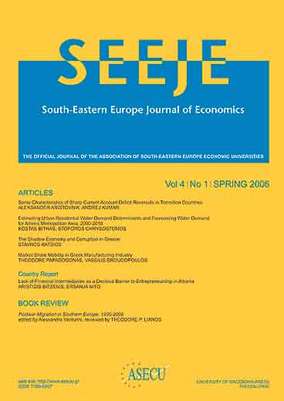The Dutch disease in unwonted places - why has Croatia been infected while Slovenia remains in good health?
Part of : SEEJE ; Vol.9, No.1, 2011, pages 47-65
Issue:
Pages:
47-65
Author:
Abstract:
Comparing developments in Croatia and Slovenia, the paper tests the proposition that the Dutch disease results from excessive total foreign exchange inflows from various sources – exports of natural resources not necessarily being one of them. It is shown that the sum of foreign exchange inflows from foreign tourism, workers’ remittances and net capital inflows (the sum of direct and portfolio investment and changes in the foreign debt position) in Croatia were almost three times as high as those in Slovenia. The consequences were an appreciation of the domestic currency (Kuna) in Croatia, while the Slovenian Tolar exhibited a constant tendency to depreciation. In contrast to Slovenia, Croatia appears to suffer from strong symptoms of deindustrialization. The steeper rise of real wages in Croatia, as the consequence of the overflow of foreign exchange windfall, is seen as the decisive reason for the deteriorating competitive position of producers of tradables in Croatia.
Subject:
Subject (LC):
Keywords:
Dutch disease, foreign exchange inflows, deindustrialization, Croatia, Slovenia
Notes:
Περιέχει σημειώσεις, πίνακες, διαγράμματα και βιβλιογραφία, JEL Classification: F3, F43




